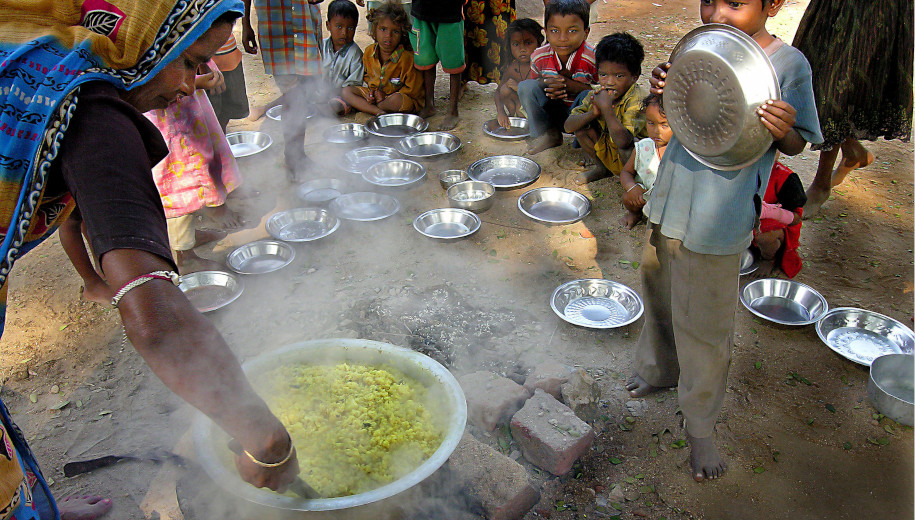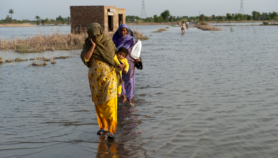16/07/21
Climate vulnerability linked to child malnutrition in India

By: Neha Jain
Send to a friend
The details you provide on this page will not be used to send unsolicited email, and will not be sold to a 3rd party. See privacy policy.
[NEW DELHI] Children living in Indian districts that are highly vulnerable to climate variability are more likely to suffer from malnutrition than those living in districts with very low vulnerability, a study suggests.
Bidhubhusan Mahapatra, an author of the study*, explains that “due to increasing climate variability, several staple crops, which are rich with several nutritional values, are not being cultivated extensively”.
The latest study published in PLOS ONE examines the association between vulnerability of agriculture to climate change and malnutrition among children aged five in India. Mahapatra and his colleagues linked an index of vulnerability of agriculture to climate change to child malnutrition indicators —stunting, wasting, underweight and anaemia — from the National Family Health Survey-4 (NFHS-2016).
The team also performed a spatial analysis and pinpointed geographical hotspots of high vulnerability of agriculture to climate change and child malnutrition.
If a child belonged to a very highly vulnerable district, the odds of suffering from stunting increased by 32 per cent, wasting by 42 per cent, underweight by 45 per cent and anaemia by 63 per cent compared to a child from a very low vulnerable district.
The team also found that rates of child malnutrition were higher by up to five per cent for very highly vulnerable districts than for districts with low vulnerability.
Hotspots of high vulnerability to climate change and child malnutrition were clustered around western and central India but the researchers noted some concentrations of stunting in the eastern part of the country. The team identified 69 districts from the states of Bihar, Chhattisgarh, Gujarat, Haryana, Jharkhand, Karnataka, Madhya Pradesh, Maharashtra, Rajasthan, and Uttar Pradesh that face both high climate vulnerability and high levels of malnutrition.
“It would be important to develop cluster-specific agricultural plans based on the nutritional requirements of the area considering the climatic condition,” says Mahapatra, adding that such strategies need to have a long-term vision and develop culturally-rooted and organic solutions to make communities climate-resilient.
“It would be important to develop cluster-specific agricultural plans based on the nutritional requirements of the area considering the climatic condition”
Bidhubhusan Mahapatra
“We should set-up a strong monitoring and surveillance system that assesses the progress of the climate condition, nutritional status and agricultural production at the village-level,” Mahapatra says. He suggests that the government create an inter-ministerial platform that could “come together and develop a climate-sensitive nutritional roadmap”.
Mahapatra adds that “state governments should strengthen the Panchayati Raj Institutions [a system of self-government of villages in rural India] further by providing them with training on climate-smart agriculture, making them aware of climatic needs of their area and what kind of cultivation would meet the nutritional requirement”.
A similar study published May in Sustainable Production and Consumption explored the effect of the climate vulnerability index on a Child Health Index that was created combining all of the indicators of child malnutrition. This study also found districts vulnerable to agriculture and child health clustered in central and western parts of India.
Drought and heat stress-tolerant crops should be promoted in these regions, the authors of the May study suggested, adding the need for strengthening education and social marketing strategies to promote cultivation and consumption of local, micronutrient-rich crops.
Sujit Kumar Ghosh, professor at the North Carolina State University points to a possible limitation to both studies. “Both have analysed a snapshot of the data based on NFHS-2016 only and so such an analysis may not capture the changing dynamics of weather and policies over many years,” he says. “Trend analyses could be conducted in future as more years of data becomes available.”
*This article was edited on 17 July 2021.
This piece was produced by SciDev.Net’s Asia & Pacific desk.














